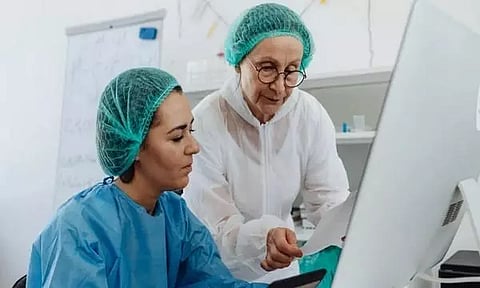

WASHINGTON: Researchers used a noninvasive, ultrasound-based technique to investigate the safety and feasibility of gene delivery to numerous brain regions in rats, and their findings suggest that as more locations are opened, gene delivery effectiveness improves within each targeted site.
The study’s lead author is Shirin Nouraein, a PhD student in Rice bioengineer Jerzy Szablowski’s group, and it was just published in the journal Gene Therapy.
The research, “Acoustically Targeted Noninvasive Gene Therapy in Large Brain Volumes,” builds on the Szablowski lab’s previous work, which employed concentrated ultrasound radiation to safely permeate the blood-brain barrier. Focused ultrasound blood-brain barrier opening (FUS-BBBO) is the name given to this procedure.
The method also allows proteins and other tiny molecules to travel in the opposite way, from the brain to the bloodstream, where they may be easily sampled.
“We use focused ultrasound to open nano-sized pores in the brain’s endothelium,” said Nouraein, a graduate student in systems, synthetic and physical biology. “This permits the noninvasive delivery of naturally occurring viral vectors throughout the brain, which is important in the treatment of genetic disorders.”
Many disorders affect large brain regions or the entire brain, but the delivery of gene therapy to these regions is difficult, said Szablowski, assistant professor of bioengineering and director of the Laboratory for Noninvasive Neuroengineering.
“When a gene-delivery vector is injected into the brain with a needle, it often only diffuses a few millimetres,” Szablowski said. “To treat the entire brain, one would need to perform thousands of injections, which would be difficult and possibly harmful. With FUS-BBBO, such surgical delivery could be circumvented.”
Nouraein and her research collaborators tested the efficiency and safety of opening 105 sites simultaneously with positive results in most regions of the brain. Surprisingly, their findings suggest that the efficiency of gene delivery improves within each targeted site when more sites are opened.
“We found that delivery of the vectors throughout the brain doubles the efficiency of delivery for the same dose of the virus compared to when only 11 sites are targeted,” Szablowski said, adding that Nouraein played a major role in making the discovery
“Shirin just started her second year in graduate school and has already led an important, complex project, showing exceptional productivity and talent,” Szablowski said.